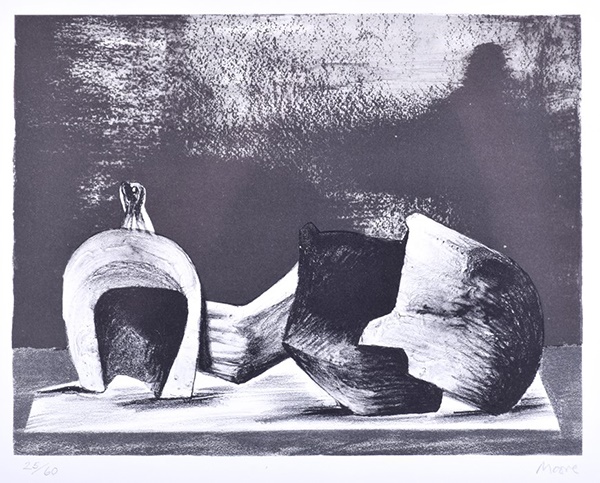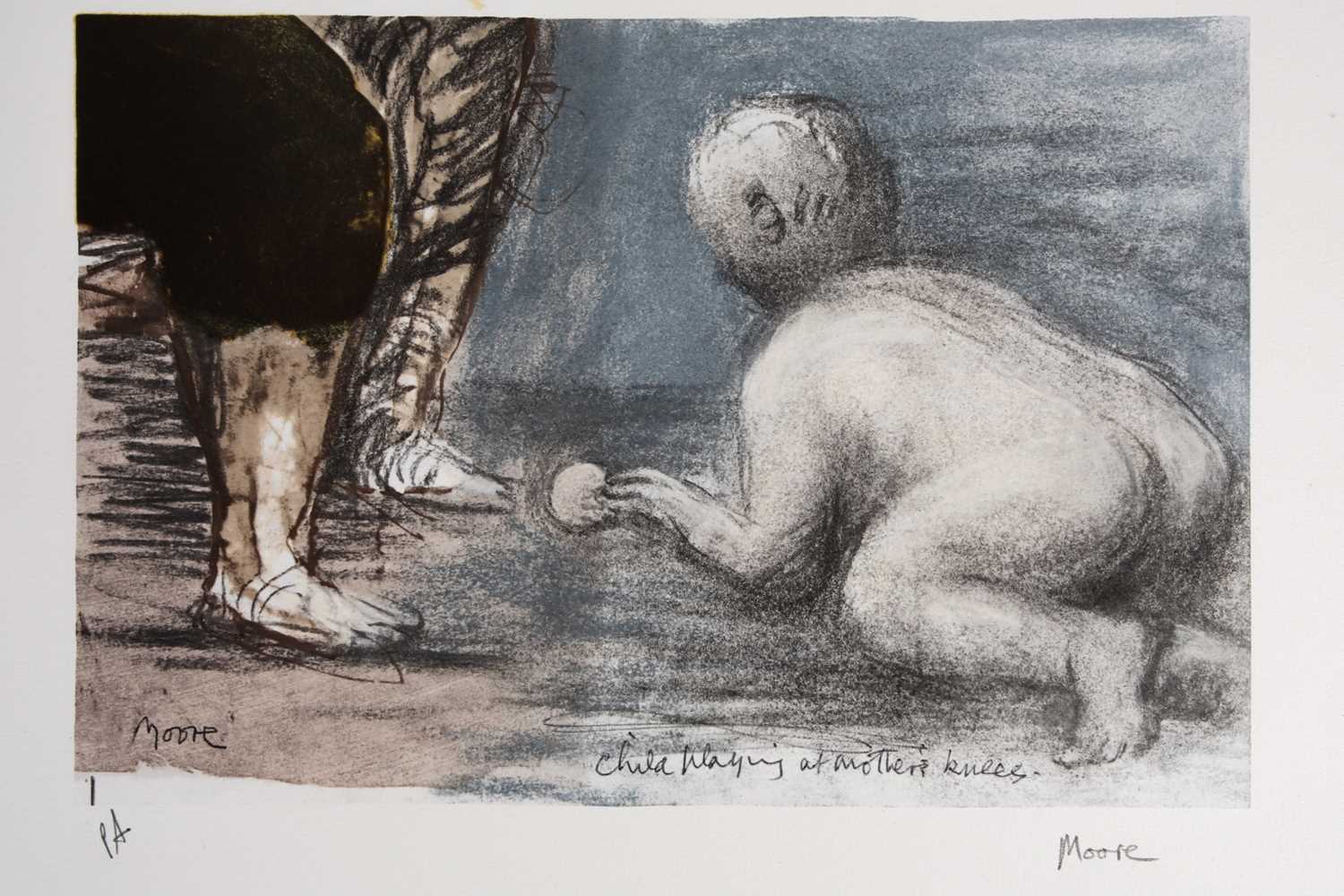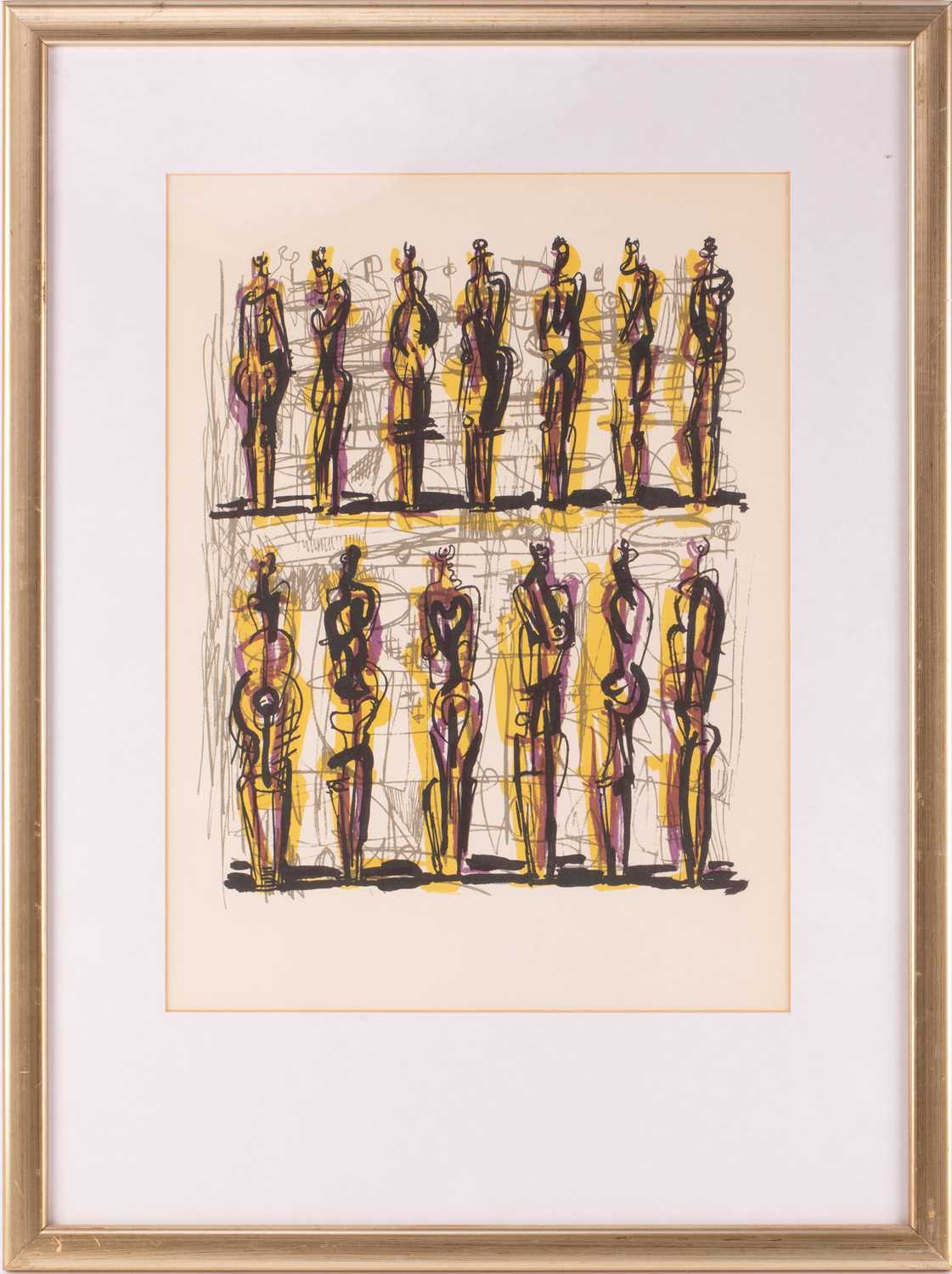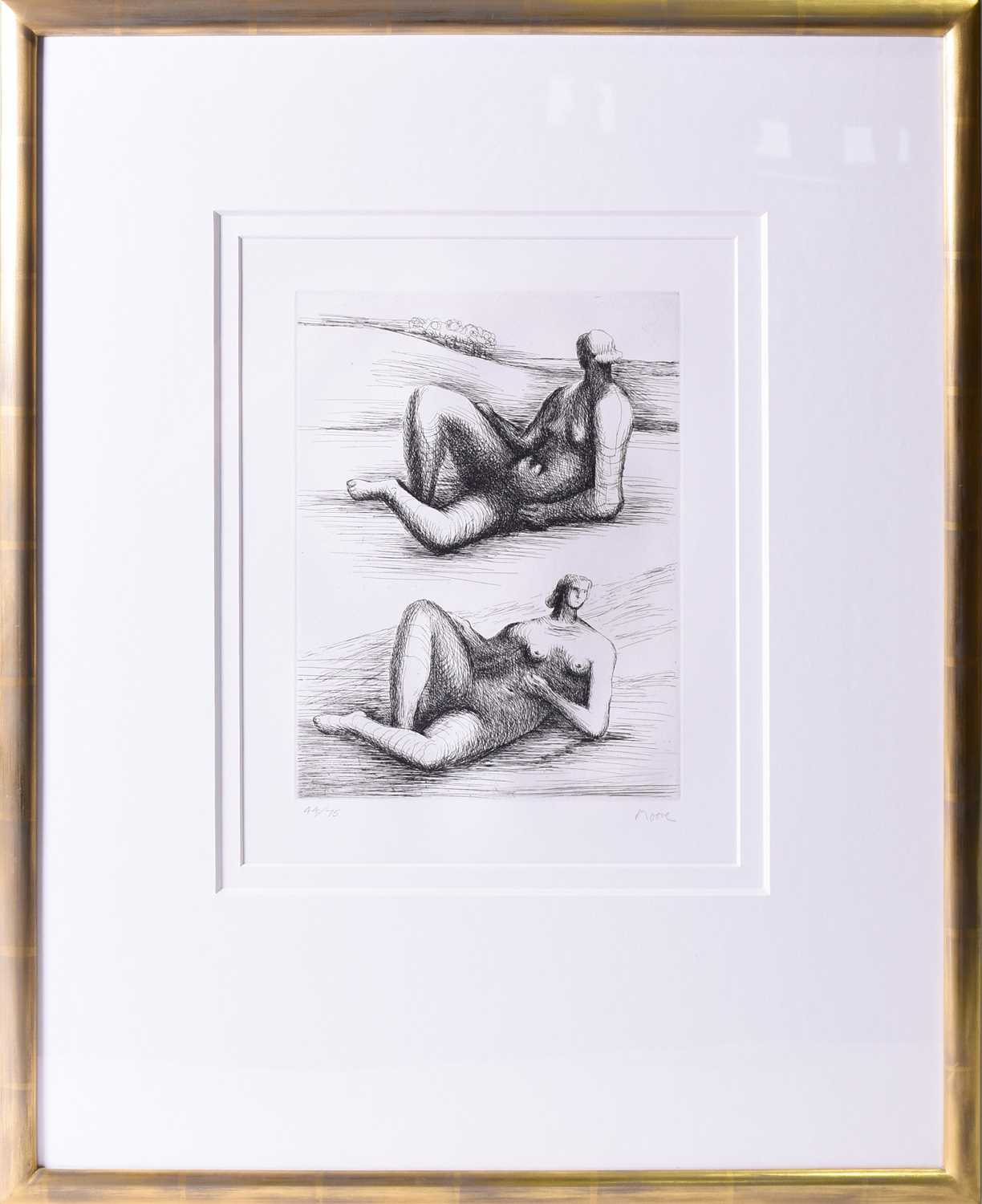henry moore
Henry Moore (1898-1986) was born in Castleford, a small mining town in Yorkshire, and had ambitions to become a sculptor from an early age. Due to his father's desire for him and his siblings to receive a formal education, Moore reluctantly trained as a teacher, eventually working as a student teacher in the secondary school he had attended. The First World War was a turning point for Moore, at the age of 18 he volunteered for army service and was the youngest man in the Prince of Wales' Own Civil Service Rifles regiment. His ex-serviceman's grant allowed him to pursue his ambitions to become an artist, and he enrolled at the Leeds School of Art, followed by the Royal College of Art in London.
In addition to his sculptures, both World Wars encouraged Moore to focus on his drawings, including a series depicting Londoners sheltering from the Blitz in the Second World War, as well as other graphic works on paper. His sculptures were typically abstractions of the human figure, often mother and child or reclining figures. His carved marble and abstract bronze sculptures have become a definitive part of his image as a sculptor, and can be found in public areas across the world. Most of the wealth Moore accumulated over his lifetime was put towards the Henry Moore Foundation, that continues to promote education in the arts to this day.



